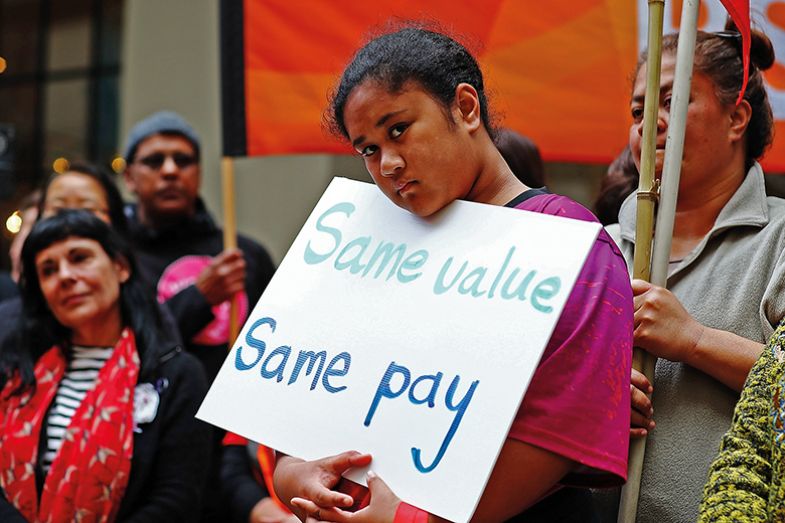Browse the full results of the Impact Rankings 2024
Participate in next year’s Impact Rankings
When it comes to the university sector’s contribution to averting climate disaster and ensuring a more sustainable world, groundbreaking research and educating future leaders is what comes to mind for many. But those in the sector know that universities contribute to achieving the SDGs in myriad other ways, from outreach work influencing local and global communities to leading by example and running their own organisations as sustainably as possible.
The Times Higher Education Impact Rankings track these different ways of contributing to the SDGs under four themes: research, teaching, outreach and stewardship. Here we’ve taken a deep dive into the data to see where universities are excelling in the perhaps lower-profile work of outreach and stewardship.
For every SDG, we have mapped each indicator to one or more themes, then given each university a score out of 100 for each theme. We have extrapolated country and continent averages from those scores (for more detail on the methodology, see the box below).
By looking at the types of activities in which universities are partaking, we can see where strengths lie and where there is room for improvement. At the continent level, if a region is strong in one area, it tends to be strong in all. But at the country level some differences emerge.
Impact Rankings 2024: results announced

Stewardship
How universities steer their own ships in terms of sustainability and equality is important, both in contributing to sustainable development for its own sake and for setting an example to other sectors and organisations.
Being good at stewardship activities means scoring well for indicators such as tracking food waste and having sustainable food choices on campus (SDG 2), the proportion of senior female academics (SDG 5), having water reuse policies and measurements (SDG 6), ensuring energy efficiency with renovations of buildings (SDG 7), and guaranteeing a living wage (SDG 8).
Looking at country-level performance, based on nations with five or more ranked universities, New Zealand is top for stewardship, followed by Australia, Hong Kong, Ireland and Canada.
However, at the university level, some institutions buck their country's trend. The top-scoring institution for stewardship activities is Afe Babalola University in Nigeria, followed by RMIT in Australia and Walailak University in Thailand. Batterjee Medical College in Saudi Arabia also receives a high score, as do Swansea and Northumbria universities and the University of Exeter in the UK.
Top universities for stewardship
|
Institution |
Country/region |
Stewardship score |
|
Nigeria |
98.2 |
|
|
Australia |
96.1 |
|
|
Thailand |
95.6 |
|
|
United Kingdom |
95.1 |
|
|
Australia |
95.0 |
|
|
Australia |
95.0 |
|
|
Saudi Arabia |
94.8 |
|
|
Australia |
94.4 |
|
|
United Kingdom |
94.2 |
|
|
United Kingdom |
94.1 |
“It’s important to ‘walk the talk’ and give young people a clear sense of what sustainability looks like in practice, in addition to what they learn through their studies,” says Ellie Kivinen, associate director of the Sustainability Hub at the University of Auckland, which ranks 13th globally for stewardship. Some of the institution’s most impressive stewardship initiatives include the refurbishment of a 50-year-old building in an “adaptive reuse” project, which cut carbon emissions in half by reusing and strengthening the existing structure rather than starting from scratch.
Auckland is also working on improving pay equality within the university. It has identified pay gaps for women, Māori and Pacific peoples, and those of diverse ethnicities, and believes that taking ownership of these numbers is crucial. Guillermo Merelo, associate director of diversity, equity and inclusion at the institution, says: “This is only the beginning of our journey in creating a sustainable people culture, where everyone feels their contributions are equally valued in our complex organisational ecosystem.”
George Marston, pro vice-chancellor (strategic projects) at Northumbria University, says that universities can have a significant impact on sustainability through their operational activities, “but it is the influence they bring to bear more widely – on students, cities and regions through their role as anchor institutions, and the national and international research communities – that has the biggest impact on driving sustainability. Leading by example is essential if we are to have credibility within these communities.”
Top countries/regions for stewardship
|
Country/region |
Number of ranked universities |
Average stewardship score |
|
New Zealand |
8 |
85.3 |
|
Australia |
21 |
84.4 |
|
Hong Kong |
5 |
81.9 |
|
Ireland |
8 |
81.4 |
|
Canada |
24 |
80.5 |
|
United Kingdom |
68 |
79.7 |
|
United States |
46 |
69.1 |
|
South Korea |
24 |
67.9 |
|
Belgium |
5 |
65.2 |
|
Netherlands |
6 |
64.5 |
Note: Table only includes nations with five or more ranked universities.
Outreach
Universities that are good at outreach score highly for indicators such as contributing to policies addressing poverty (SDG 1), collaborating with health institutions (SDG 3), providing programmes for the local community to learn about energy efficiency (SDG 7), participating in cooperative planning for climate change disasters (SDG 13) and providing expert advice to government (SDG 16).
Universities in Hong Kong are especially strong at this type of work, with an average score of 81.4 out of 100. Canada, New Zealand, Australia and Ireland make up the rest of the top five.
The highest-ranking institution when it comes to outreach is again Afe Babalola University in Nigeria, followed by the University of Minnesota in the US. The latter institution is the sole university partner for the SDG Data Alliance, which brings GIS (geographic information system) technology to developing countries to speed up SDG achievements.
The UK’s Ulster University, which ranks joint fifth in the world for outreach activities, says it is particularly strong on sports initiatives, running programmes to support activity among disadvantaged young men, “at risk” young people and those with mild to moderate intellectual or physical disabilities. The university also has a programme in partnership with Belfast City Council to deliver free training to the community on green skills, and a short course on legal technology with law firm Allen & Overy.
“Our place at the heart of Northern Ireland’s knowledge and skills ecosystem is highly developed, as is the part we play in economic growth and regional enhancement of cultural life,” says Ian Montgomery, Ulster’s dean of sustainability and corporate social responsibility.
Top universities for outreach
|
Institution |
Country/region |
Outreach score |
|
Nigeria |
98.0 |
|
|
United States |
97.0 |
|
|
United States |
96.2 |
|
|
Thailand |
95.8 |
|
|
India |
95.0 |
|
|
United Kingdom |
95.0 |
|
|
United Kingdom |
94.7 |
|
|
United Kingdom |
94.6 |
|
|
Hong Kong |
94.6 |
|
|
New Zealand |
94.5 |
Over in Asia, The Chinese University of Hong Kong, which ranks joint eighth for outreach, worked with the Hong Kong Jockey Club Charities Trust to launch the Hong Kong chapter of the United Nations’ Sustainable Development Solutions Network (SDSN Hong Kong), which now has 55 chapters worldwide with more than 1,900 institutional members. Their partnership has also created the Jockey Club Museum of Climate Change, which is located at CUHK and is the world’s first museum focusing on climate change.
“CUHK is known for its thought leadership in the creation and application of practical solutions for sustainable development contributing to the wellbeing of communities, local and beyond,” a spokesperson said.
At Arizona State University (Tempe), ranked third for outreach, a key local programme is “Project Cities”, in which sustainability faculty and students pair with a city to co-create strategies for better environmental, economic and social balance. Students from multiple disciplines research challenging issues chosen by the city and propose sustainability solutions. On a national level, the university has partnered with the Mayo Clinic to improve the science of healthcare delivery and practice while advancing patient care.
“Community-university collaborations ensure we can make progress towards achieving the SDGs at the local, national and international levels,” says Christina Ngo, director of social embeddedness at ASU.
Top countries/regions for outreach
|
Country/region |
Number of ranked universities |
Average outreach score |
|
Hong Kong |
5 |
81.4 |
|
Canada |
24 |
80.4 |
|
New Zealand |
8 |
80.4 |
|
Australia |
21 |
80.0 |
|
Ireland |
8 |
76.4 |
|
United Kingdom |
68 |
75.6 |
|
Belgium |
5 |
71.9 |
|
Germany |
8 |
68.1 |
|
South Korea |
24 |
67.9 |
|
Netherlands |
6 |
66.2 |
Note: Table only includes nations with five or more ranked universities.
Methodology
The Impact Rankings track the different ways of contributing to the SDGs under four themes: research, teaching, outreach and stewardship. For this analysis, we have mapped every indicator to one or more relevant themes.
For example, under SDG 3 (good health and well-being), we track: the number of publications linked to health, which sits under the research theme; the proportion of graduates who receive a health degree, which sits under the teaching theme; outreach programmes in the local community to improve health and well-being, which sits under the outreach theme; and mental health support for students and staff, which sits under the stewardship and teaching themes.
Universities are given a percentile score for each theme (based on their performance on all of the theme’s indicators). This score indicates how the university performs on each theme relative to other universities.
For example, if a university has a percentile score of 60 for the teaching theme, it performs better than 60 per cent of universities across the world in terms of teaching activity related to the SDGs.
We have only analysed universities that have participated in at least four SDGs, including SDG 17. To indicate a region’s relative strength, we have used the average percentile scores by country and continent.
POSTSCRIPT:
Print headline: Handling with care
Register to continue
Why register?
- Registration is free and only takes a moment
- Once registered, you can read 3 articles a month
- Sign up for our newsletter
Subscribe
Or subscribe for unlimited access to:
- Unlimited access to news, views, insights & reviews
- Digital editions
- Digital access to THE’s university and college rankings analysis
Already registered or a current subscriber? Login









